2026 Fox Float X2 and DHX2
MSRP: $699–$739 USD / $939–$989 CAD / €939–€989
Adjustments: High- and low-speed rebound, high- and low-speed compression, climb switch (on certain sizes only)
Sizes Offered:
- Eyelet:
- 210 x 50 / 52.5 / 55 mm
- 230 x 60 / 62.5 / 65 mm
- 250 x 75 mm
- Trunnion:
- 185 x 55 mm
- 205 x 60 / 65 mm
- 225 x 75 mm
Stated Weight: 720 g (210 x 55 mm)
Blister’s Measured Weight: 758 g (185 x 55 mm)
MSRP: $679–$719 USD / $899–$959 CAD / €909–€959
Adjustments: High- and low-speed rebound, high- and low-speed compression, climb switch (on certain sizes only)
Sizes Offered:
- Eyelet:
- 210 x 50 / 52.5 / 55 mm
- 230 x 60 / 62.5 / 65 mm
- 250 x 75 mm
- Trunnion:
- 185 x 55 mm
- 205 x 60 / 65 mm
- 225 x 75 mm
Stated Weight: n/a
Blister’s Measured Weight:
- Shock body: 593 g (230 x 65 mm, standard reservoir version)
- 375 lb/in SLS spring: 269 g
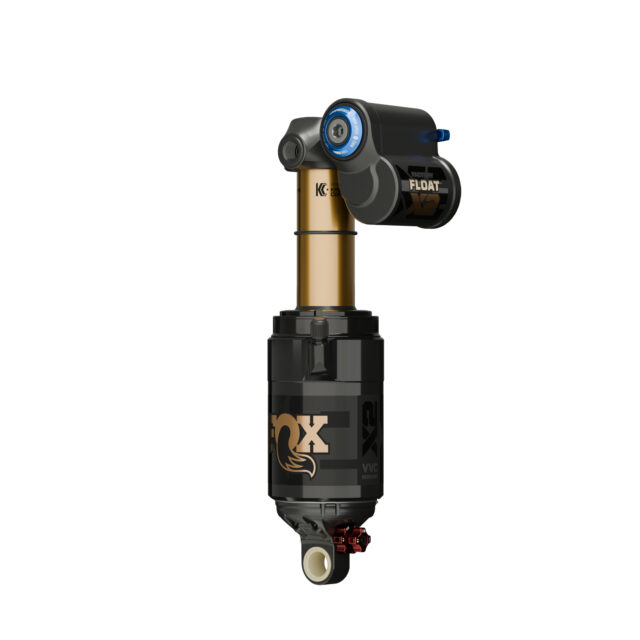
Intro
Fox has been on quite a spree of fork updates recently with the new 34 SL and overhauled 36 lineup, and now they’ve updated their two most gravity-oriented shocks, the Float X2 and DHX2, too. As with the prior generations, both share the same damper architecture in air- and coil-sprung versions, respectively, but the damper is quite a bit different from the design it replaces.
We’ve got both shocks in for review and will have more to say about their performance soon, but for now, let’s get into the design details:
Design
The Float X2 and DHX2 are built around the same updated damper design, just with different spring arrangements wrapped around it.
That new damper is a major departure from the earlier versions of the Float X2 and DHX2. Both shocks are now in their third full generation, though the two prior versions went through some revisions over the years. Both the first- and second-generation shocks used twin-tube damper layouts, but the new ones switch to a monotube layout.
Fox says that matching the performance of their flagship Grip X2 fork damper was their top priority with the redesign of the Float X2 and DHX2. As with the Grip X2 (compared to the Grip2 damper that it replaced), the new shocks feature a larger base valve with a much larger compression shim stack than the outgoing versions. The reservoir / bridge of the shocks has also been reshaped. The reservoir that houses the internal floating piston (IFP) that handles the oil displaced within the damper as it cycles is now oriented perpendicularly to the shock body rather than parallel to it. (On the standard versions, anyway. An alternate version with the reservoir running parallel to the shock body is available for bikes that require it for clearance.)
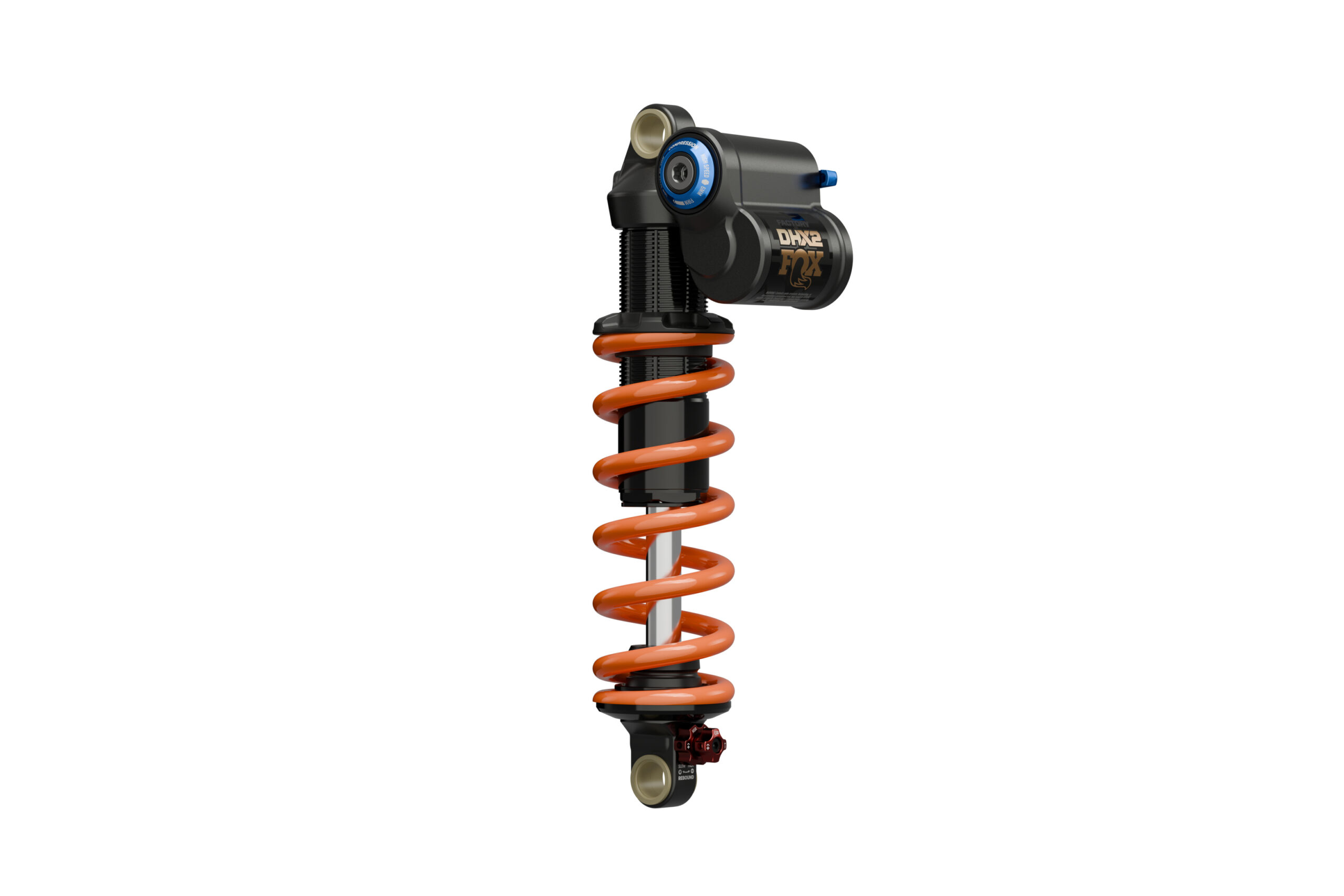
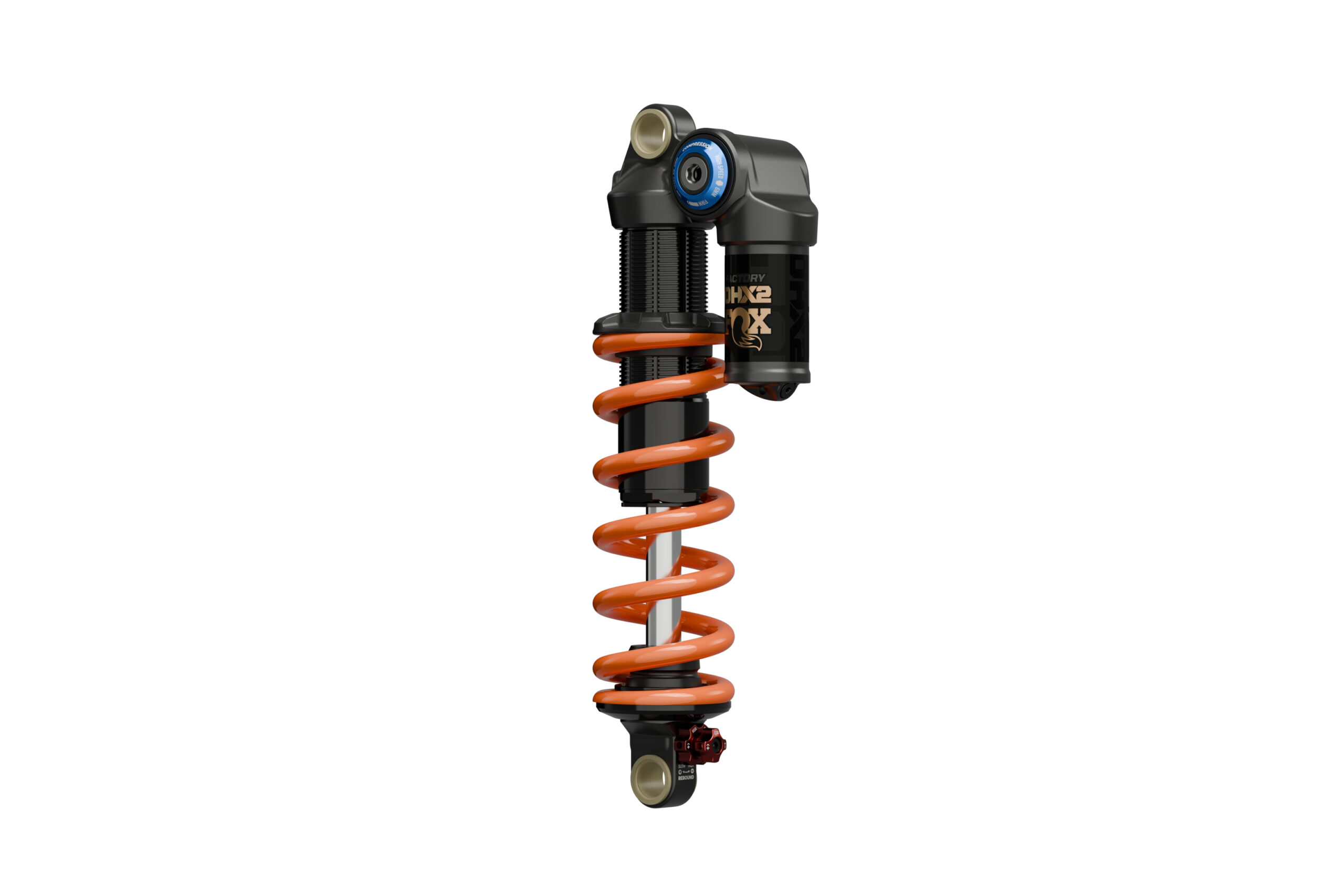
Along with the reshaping of the bridge and reservoir, the low-speed rebound adjuster has been moved to the lower eyelet from the shock bridge.
That relocation is driven by the move to a monotube damper layout. Fox says the main reason for that change was that it let them reduce the positive pressure in the damper (driven by the IFP size/pressure), which, in turn, helps the damper break away and start moving more quickly.
Maintaining the separate high- and low-speed rebound adjusters of the earlier generations of the Float X2 and DHX became a challenge, though. Like every other monotube damper I can think of, the low-speed rebound adjuster uses a needle and orifice design to control how large a cross-section is open for oil flow at lower shaft speeds. Once the shock is rebounding fast enough to require more flow than the orifice can allow, the valving on the main piston — the high-speed rebound circuit — comes into play as well. However, designing an adjuster that can act on the main piston valving is tricky.
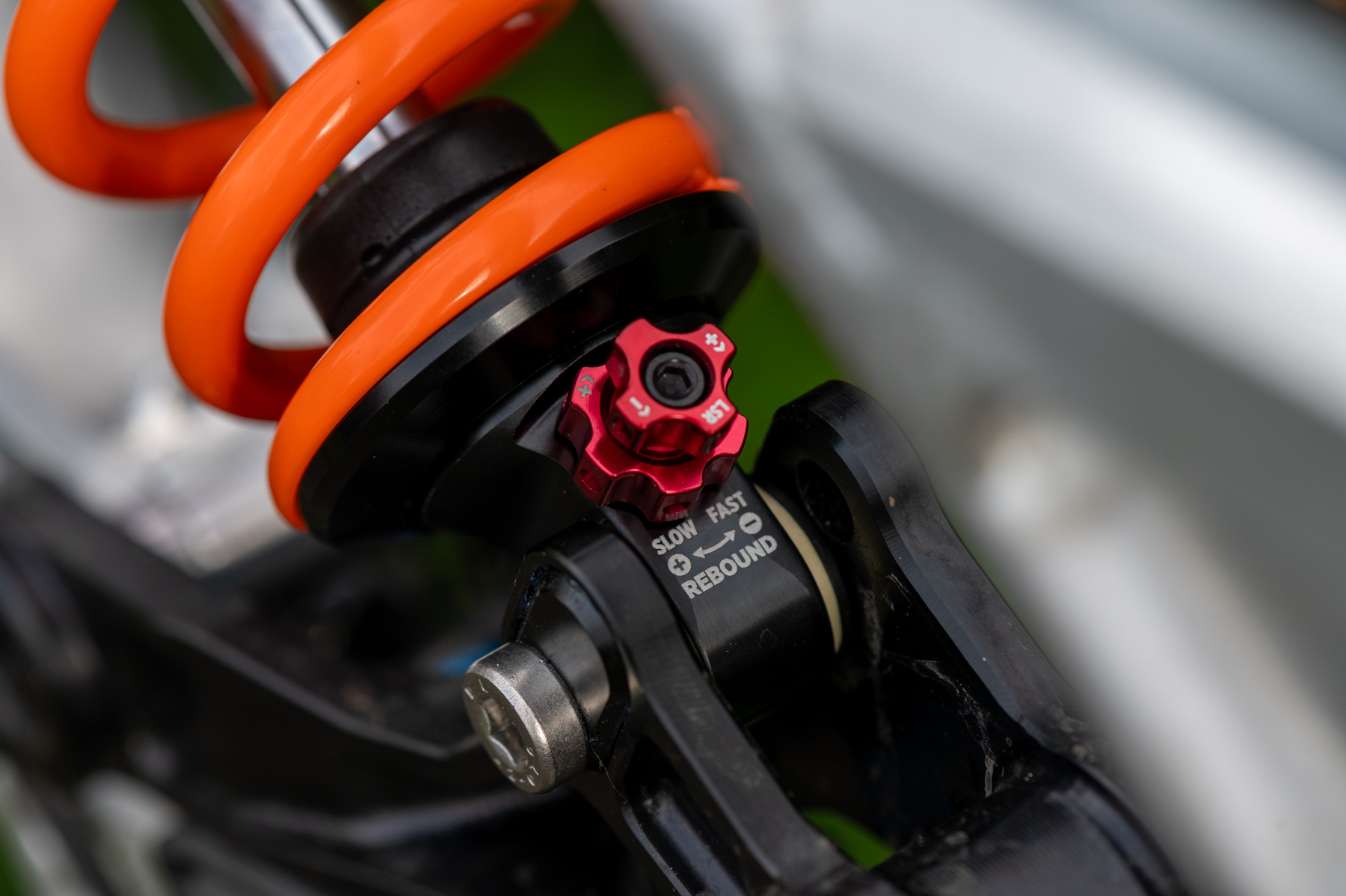
But Fox came up with a solution — there’s a high-speed rebound knob behind the low-speed one at the shock eyelet, which when turned rotates the rebound shaft (the end of which is the aforementioned needle) via a cam and a pair of gears. That rotation then acts on the Variable Valve Control (VVC) adjustment plate in the main piston to adjust the high-speed rebound behavior.
[For folks who aren’t familiar with or could use a refresher on VVC, it’s essentially a way to vary the leverage the damper oil has on the shim stack as it moves through a valve, thereby making the shim stack effectively stiffer or softer. The prior-gen Float X2 and DHX2 also used VVC on their high-speed rebound circuit, albeit with very different packaging due to the twin-tube damper layout used there.]
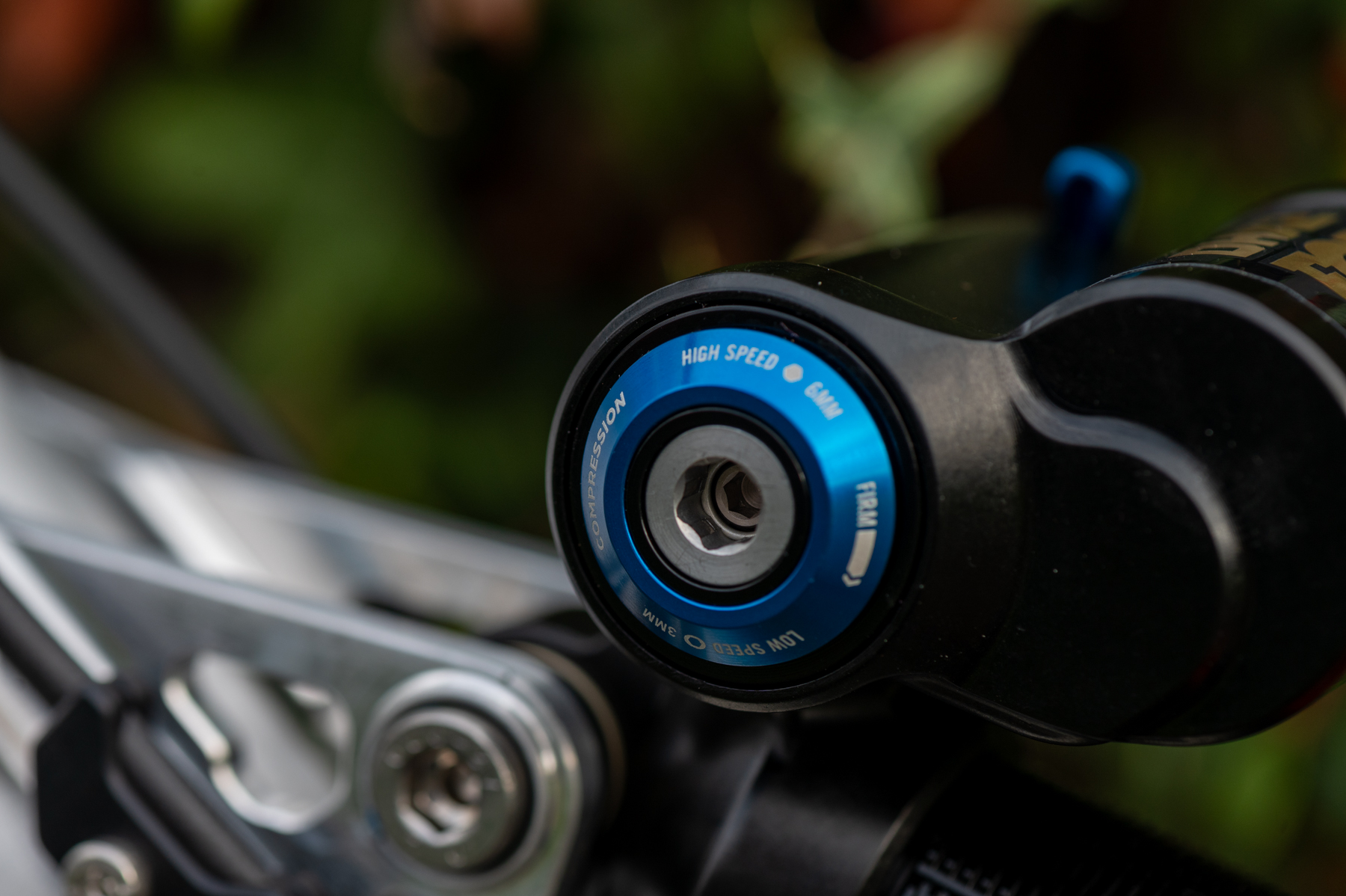
Along with those changes, Fox has increased the diameter of the damper shaft on both shocks to 12.7 mm from 9.5 mm (0.5’’ and 0.375’’, respectively) to increase strength. As with the prior-generation versions, both the Float X2 and DHX2 are offered in a range of sizes from 210 to 250 mm (eyelet mount) and 185 to 225 mm (trunnion mount) lengths. The longest 225 / 250 mm versions forgo the climb switch that’s featured on the other sizes since they’re assumed to be used almost exclusively on DH bikes. Not every possible stroke length will be available aftermarket, but both shocks can have their stroke reduced with bolt-on spacers.
There are fewer changes on the spring side of things. The Float X2 still uses a high-volume air spring with a self-equalizing negative chamber and volume spacers to tune the volume of the positive chamber and with it, the amount of progression in the spring. The DHX2 remains coil-sprung, though Fox is now offering their lightweight SLS coil springs in a matte black finish; they were only available in orange previously.
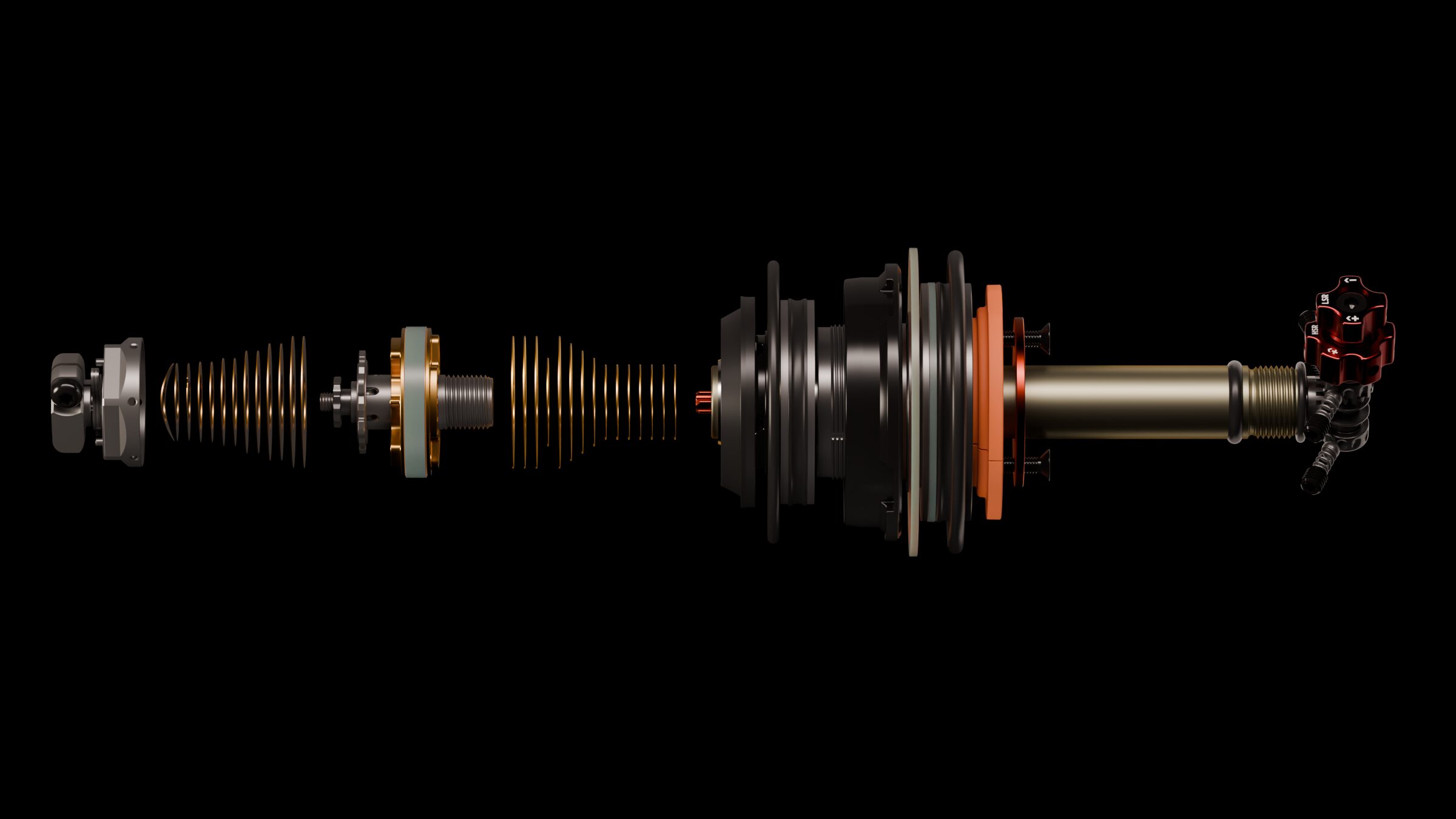
Some Questions / Things We’re Curious About
(1) How does the new damper perform? The new Grip X2 fork damper is a big improvement over the Grip 2 VVC one that it replaced, but has Fox managed to make a comparably big step up here?
(2) What about reliability? The prior-generation Float X2, in particular, was prone to ingesting air into the damper, and while Fox made some improvements over its run that helped with that issue, their overall track record wasn’t the best. Has Fox gotten the new shocks right out of the gate?
(3) Does the climb switch on the new shocks feel firmer than the old ones? I’m finding myself using climb modes less frequently than I did not so many years ago, when bikes as a whole pedaled worse and had geometry that was less suited to extended steep climbing, but I always found the climb switches on the prior-gen Float X2 and DHX2 shocks to be quite light and not especially effective. Is that still the case here?
(4) Will we see Live Valve Neo versions of the Float X2 and DHX2 at some point?
Bottom Line (For Now)
Fox has made some very interesting updates to their Float X2 and DHX2 shocks, and we’ve got both in for review. Check out our early impressions below, and stay tuned for a Full Review to follow.
Flash Review: Our Initial On-Trail Impressions
BLISTER+ members and those who purchase our Digital Access Pass can check out the Flash Review below to read our initial on-trail impressions. Get our Digital Access Pass to view all our Flash Reviews and Deep Dives, or become a BLISTER+ member today to get access to that and a LOT more, including the best worldwide Outdoor Injury Insurance, exclusive deals and discounts on skis, personalized gear recommendations from us, and much more.
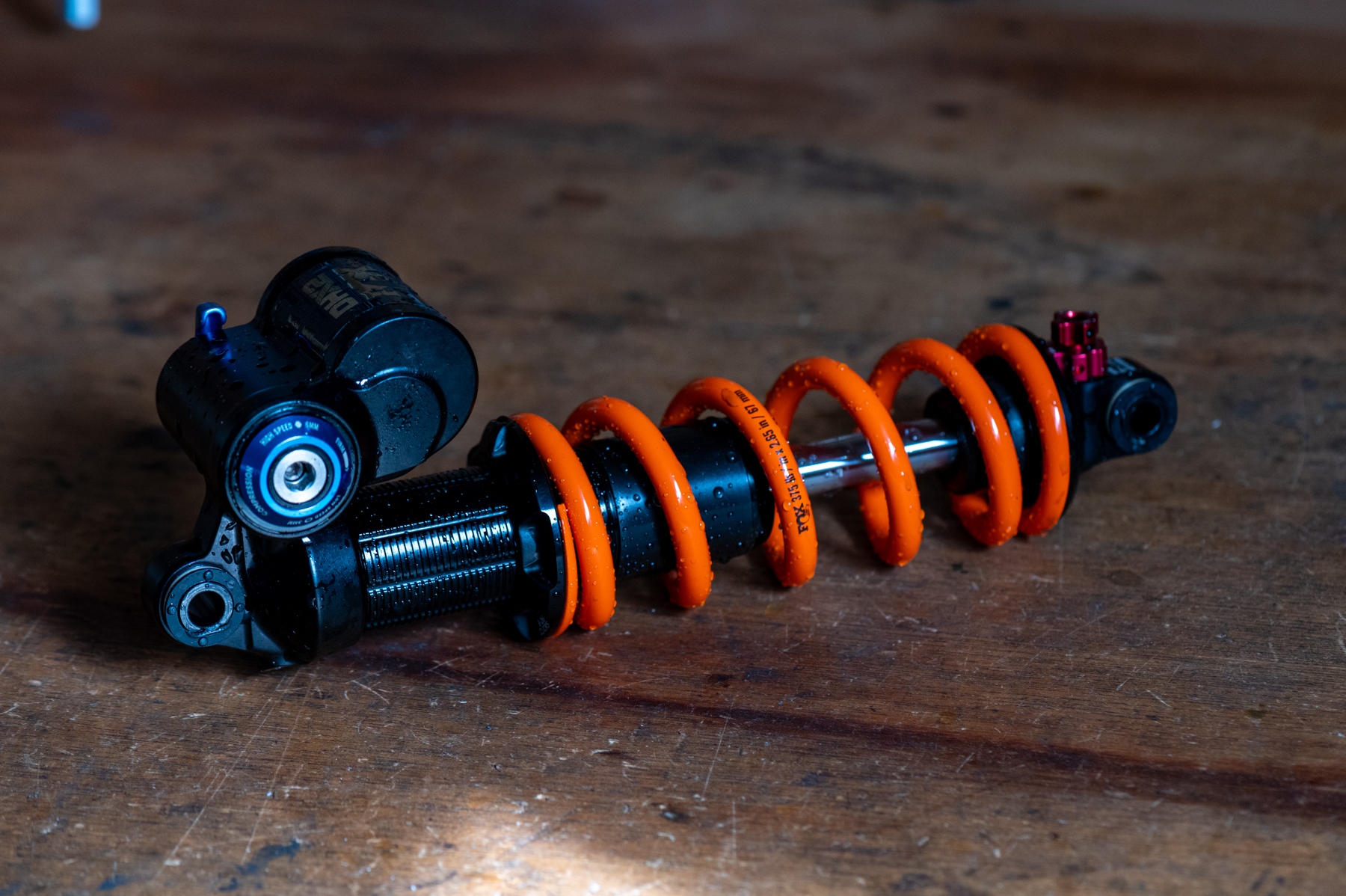
Flash Review: 2026 Fox DHX2
We’ve started spending time on the new Fox DHX2. Check out how it’s going so far.
Blister’s Flash Reviews and Deep Dives are accessible to those who purchase one of our paid subscriptions
To get our comprehensive Deep Dives and our initial, unfiltered reports on new gear, become a member and receive many other services, deals, and discounts.
If you’re already an active member, please log in.
(If you’re already logged in and a member in good standing and seeing this message in error, please refresh this page in your browser.)
